

| This huge triumphal arch (21 meters high), with three barrel-vaulted passageways, was erected to commemorate Constantine's victory over Maxentius at the Battle of Milvian Bridge in 312. It is just west of the Colosseum and dwarfs the nearby Arch of Titus. It incorporates recycled sculpture from earlier monuments, in part as some suggest, because creativity and technical skill had fallen off by this time period, but perhaps also because of a desire to associate Constantine with the "good emperors" Trajan, Hadrian, and Marcus Aurelius, whose monuments were cannibalized for sculpture. The faces of these emperors were recut to the features of Constantine. | ||

|
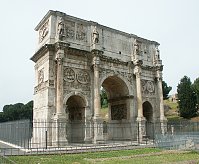
|
View of the north side |
The attic story with inscription, flanked by reliefs taken from a monument celebrating Marcus Aurelius' victory over the Germans (in 174 CE), and with free-standing figural sculptures representing prisoners, eight in total, from the Forum of Trajan made to commemorate Trajan's victory over the Dacians (in early 2nd century CE) | ||

|
The Inscription reads:"To the Emperor Constantine from the Senate and the Roman People. Since through divine inspiration and great wisdom he has delivered the state and the tyrant and his party by his army and noble arms, [we] dedicate this arch, decorated with triumphal insignia" (quoted from Stokstad 241). The same inscription is repeated on both sides. | |
View of the south side with the Colosseum to the right (or east) |
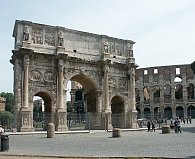
|
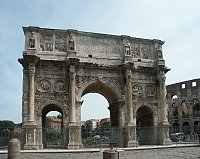
|
| There are eight rectangular reliefs in the attic which came from an arch commemorating Marcus Aurelius victories in the German wars. They depict events associated with these victories--entering Rome, making a sacrifice, addressing the troops, giving gifts to the troops, receiving the surrender of the barbarians. | ||
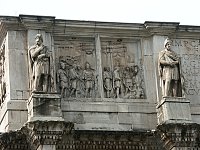
|

|
Attic reliefs, north side; left--left side; center--right side (emperor giving gifts and the surrender of the enemy) |
Attic reliefs, south side; left--left side (addressing the troops); center--right side |
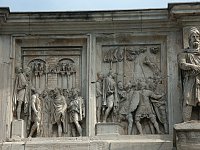
|
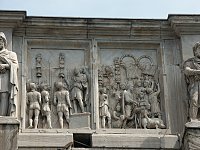
|
The east endThe ends of the arch were also decorated, which was not always the case in triumphal monuments. On the east end the medallion contains a depiction of the god Sol driving the sun chariot. Above the roundel is a frieze from a monument to Trajan depicting a battle scene. | ||
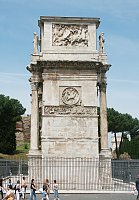
|

|

|
The west end with Luna, the moon goddess, in a chariot | ||
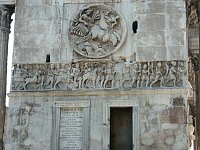
|
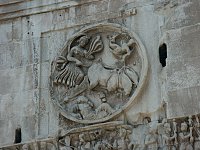
|

|
 Click here to return to index of art historical sites.
Click here to return to index of art historical sites.
 Click here to return to index of artists and architects.
Click here to return to index of artists and architects.
 Click here to return to chronological index.
Click here to return to chronological index.
 Click here to see the home page of Bluffton University.
Click here to see the home page of Bluffton University.
